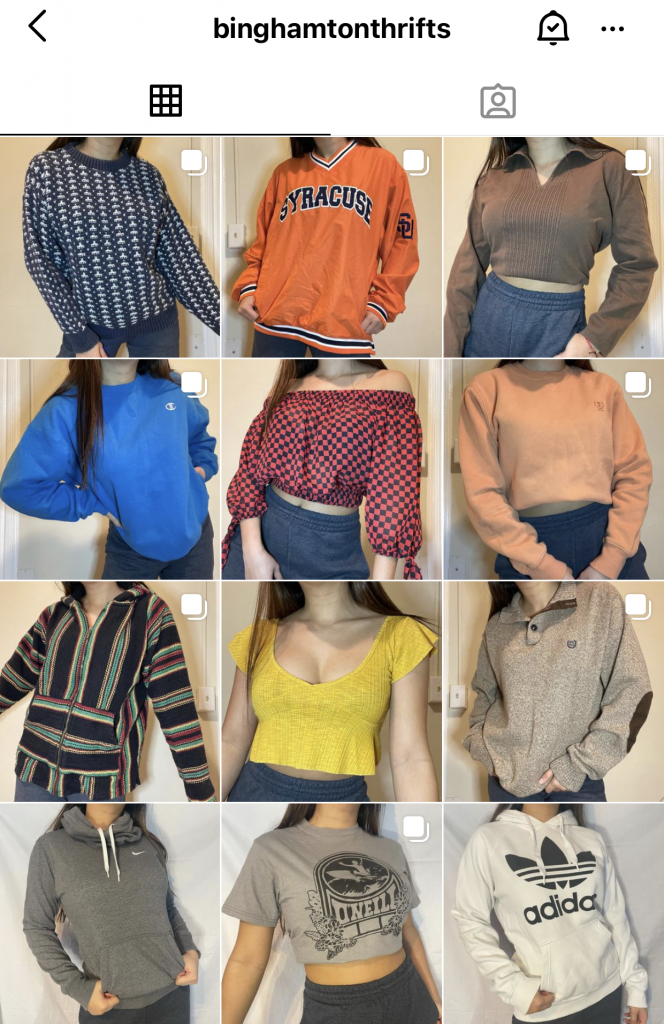The world has changed quite a bit in the past year due to the COVID-19 pandemic, causing individuals and businesses to get creative and figure out ways to expand their businesses. Thrift stores have become one of the trendiest ways to shop affordably and sustainably. Platforms like Poshmark and Depop have been around for years but come at a price — literally. The platforms take a margin of the profit from sellers. Between the pandemic and low profit margins, Instagram thrift stores have taken off. Olivia Le, a junior majoring in business administration, started the Instagram account @binghamtonthrifts last March.
“Since I go thrift shopping so often, I eventually decided to mix my interest in entrepreneurship, sustainability, social media and thrifting — and that’s how Binghamton Thrifts was born,” Le said.
Reselling clothes has become a way for college students and young adults to make money while doing something they love. The fast fashion industry, in which trendy clothing items are produced quickly despite their negative impact on the environment and those who work in sweatshops making the garments, has become less desirable. With many sustainable clothing brands selling at a steep price, thrifting has become far more appealing as a way to shop sustainably.
“I began reselling clothing [and] accessories on Instagram last year, March of 2020, because I thought it would be the perfect side hustle to make some extra spending money alongside taking classes,” Le said. “Although my passion for thrift shopping and sustainable fashion is what really inspired me.”
However, there is one major problem many are facing. The pandemic means that people are far less likely to go thrifting themselves, fearing contamination and exposure. Online thrift stores have become a great alternative to get unique, affordable pieces all while staying safe. Sellers purchase clothing themselves or from friends and family, wash the items and then list them on their boutiques.
“Even though the pandemic forced thrift stores to close for quite a long period of time, I luckily had a pretty large inventory to be able to keep my business running until they reopened,” Le said. “I also now have to take extra precaution in regards to sanitation. All inventory is always washed twice and handled by me with gloves while wearing a mask.”
Online thrift stores offer a larger variety of unique pieces. What might not be one person’s cup of tea might just be yours. Online thrifting allows for the shopper to obtain pieces from all over the world: vintage, unique, preppy, sporty, streetwear — whatever your style might be. Online thrift stores offer it all, at a fraction of the price.
“Before creating my online shop, I used to find tons of amazing pieces that weren’t personally my style, so I would leave them behind,” Le said. “I find it super cool that you can find one-of-a-kind quality vintage items at bargain prices while simultaneously helping to combat fast fashion.”
While online thrifting is not as conventional as its typical thrift store counterpart, this year has not had much of either. Online thrift stores on Instagram, Poshmark and Depop all offer a safe way to purchase one-of-a-kind pieces, while remaining in the safety of your own home.



